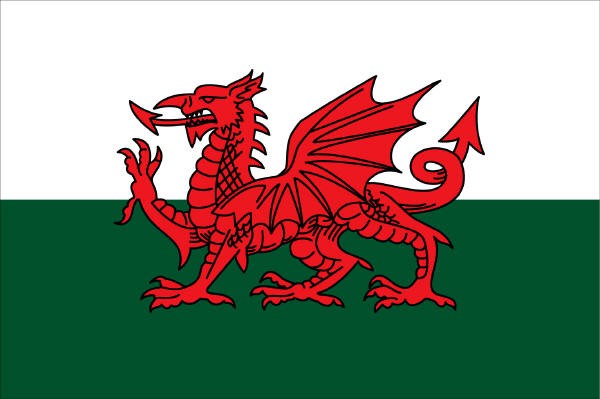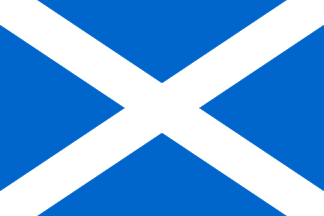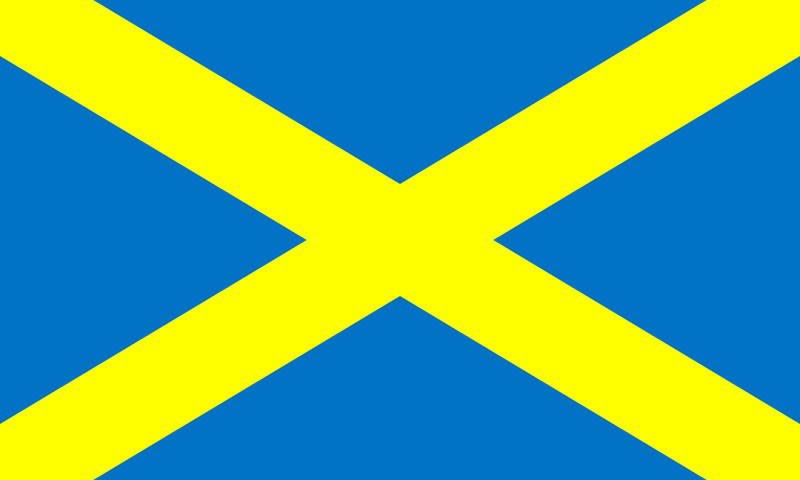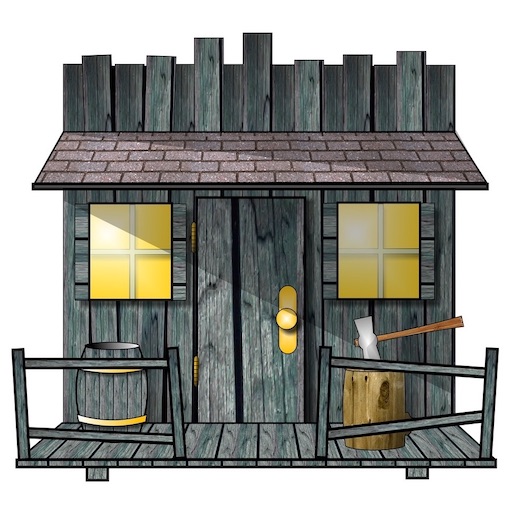This painting guide applies to all nations of the Britannia 600 AD Campaign, although variations are mentioned. Checks are common patterns for the Celtic nations (Welsh, Irish, Scots, Picts – although the latter are actually pre-Celtic), but modern style tartan was unknown (Heath, 1980).
Welsh (Cymry)
Nicolle (1984), based on a reference in the Gododdin epic, gives the example Arthurian cavalrymen a red and white costume. White horse. White tunic with red trim. White belt. White trousers. White shield. Red cloak. Steal helmet with red plume. Gilded scale armour. Leather horse further and military sandals. The accompanying Draco standard is also red and white.
Tunic
Checkered, striped or spotted. Colours were natural/unbleached, scarlet, red, brown, dark green, purple, indigo, deep blue, and white (Heath, 1980). Colours for kings and nobles probably matched those of the 8th century Irish.
Trousers
Mostly brown, grey, and reddish-brown (Mersey, 1998).
Cloaks
Plain or Checkered. Chieftains: Purple or scarlet; Others: crimson, red (Heath, 1980), brown or undyed wool (Mersey, 1998).
Sandals, Shoes, Boots
Leather, presumably, although Irish, Picts and some others often went bare foot (Mersey, 1998).
Skin (their own)
Fair skin.
Hair (their own)
Welsh hair ranged from yellow to light brown (Heath, 1980). They had moustaches and some also had beards.
Hats
Pannonian leather cap and pilleus pill box cap were usually red (Mersey, 1998).
Helmets would be fairly common. Helmet plumes were golden or yellow (Heath, 1980).
Armour
Men would wear either chainmail or a leather cuirass, if they could get them.

Chi Rho
Shields
Fanaticus: Eye Candy Dark Age Shields is worth a look for inspiration.
Medieval Welsh shields were yellow, silver, white or blue (Mersey, 1998); the silver ones probably being the “icy hued shields”. The Welsh had probably stopped using Roman symbols by our period, and the Christians were probably using religious symbols like the chi-rho, Virgin Mary, or a plain cross (Heath, 1980).
Horse equipment
Fig 28 in Heath (1980) has a yellow brown saddle decorated with silver trappings.
Standards
Throughout this period, all nations could use draco windsocks (in gold, red-gold, or red) and/or vexillum square flags (in red or purple) (Heath, 1980). The flags would have had emblems, including religious icons for the Christian nations. In all cases the flag pole is to the left, so all the dragons face their flag pole.
A red dragon has been associated with Wales since the fourth century, although the green and white stripes of the modern flag represent the house of Tudor so are a relatively late innovation (WorldAtlas: Flag of Wales).

Modern (Tudor) Wales
An alternative flag to the Welsh dragon is the flag of St David the patron saint of Wales (BBC: Flag of St David).

Alternative Wales
Cross of St David
King Arthur’s father carried a Golden Dragon standard – probably a Draco standard (Heath, 1980). The first image is from L’Histoire de Merlin by Robert de Boron (14th C.) and has King Arthur in combat, brandishing a golden draco.

King Arthur is reputed to have borne an image of the Virgin Mary at one of his battles although whether as a standard or on his shield is unknown (Mersey, 1998).

Example Armies
- Dan Becker’s Romano-British Army for (II/81)
- Fanaticus: Richard Moriarty’s Sub-Roman British (II/81c)
- Fanaticus: Jeff Caruso’s ARTHURIAN HOST Sub-Roman British (II/81c)
- Fanaticus: Jake Rose’s Sub-Roman Brits (II/81cd)
- Tcoleman’s Age of Arthur
- Fanaticus: Sub-Roman British Hill Fort
- Fanaticus: Sheep Raid
Scots-Irish
Tunic
Lower class Irish wore a waistcoat rather than a tunic (Barker, 1981). The waistcoat was brown or dark natural wool or dyed red. The aristocratic tunic was “Light” or “bright” coloured, i.e. natural unbleached, bleached white (Heath, 1980), or sometimes red-brown. The tunic could have a coloured border, red embroidery, or stripes. Barker mistakenly ascribes the Medieval saffron yellow to the early Irish, but Heath says this was introduced in the mid 14th Century. Although a bit later than our period, the Irish of the 8th Century wore ( Mersey, 1998):
- King: Purple or blue;
- Nobles: Grey, red or brown;
- Subjects: Natural/unbleached wool and linen, white, or yellow, black, blue, green, red.
Trousers
Barker (1981) says only the lower classes wore trousers which were dark natural wool, bleached wool, or striped in bright colours.
Cloaks
Usually purple, crimson or green, but could be black, blue, yellow, speckled, grey, dun, variegated or striped (Barker, 1981; Heath, 1980). Barker thinks dark natural would be the most common.
Sandals, Shoes, Boots
Irish, Picts and some others often went bare foot (Mersey, 1998).
Hair (their own)
The aristocracy had light or reddish hair and the lower classes, descended from previous inhabitants of Ireland, had dark hair (Barker, 1981).
Skin (their own)
Fair skin.
Hats
Helmets rare
Armour
Armour rare
Shields
Fanaticus: Eye Candy Dark Age Shields is worth a look for inspiration.
Irish shields were dyed one colour and never had a design (Barker, 1981). Any boss and studs might be bronze.
Horse equipment
Fig 28 in Heath (1980) has a yellow brown saddle decorated with silver trappings.
Standards
Throughout this period, all nations could use draco windsocks (in gold, red-gold, or red) and/or vexillum square flags (in red or purple) (Heath, 1980). The flags would have had emblems, including religious icons for the Christian nations. In all cases the flag pole is to the left, so all the dragons face their flag pole.
The current flag of Scotland dates from the 12th century, although legend has it the origin was from a battle between the Picts/Scots and the Northumbrians sometime between 820 and 834 (Wikipedia: Flag of Scotland; Wikipedia: Óengus II of the Picts).

Scotland
Cross of St Andrew
Example Armies
Pict
Tunic
“Light” or “bright” coloured, i.e. natural, unbleached or bleached, sometimes with coloured border or red embroidery, sometimes stripped (Heath, 1980).
Trousers
None (racy chaps that they were)
Cloaks
All the Pictish cloaks in Barker (1981) are checkered. Barker suggests they were used for camouflage so believes the colours would have been subdued. Heath (1980) implies Irish colours.
Sandals, Shoes, Boots
Leather, presumably, although Irish, Picts and some others often went bare foot (Mersey, 1998).
Skin (their own)
Fair skin.
Picts of the Roman era painted or tattooed themselves with woad, giving blue-green swirls over their body (Barker, 1981). The last recorded instance of Picts painting themselves was in the early 5th century, and the chronicles of the later Saxon period don’t mention the practice (Heath, 1980). The Welsh, however, continued to refer to Pictland as Prydein (Land of the Painted Men) so some of the more remote areas may have retained older habits.
Hair (their own)
All hair colours, although red is common (Barker, 1981)
Armour
Nobles would wear either chainmail, if they could get them.
Shields
Fanaticus: Eye Candy Dark Age Shields is worth a look for inspiration.
Pictish shield designs were intricate and delicate (Mersey, 1998). Barker (1981) includes a few example symbols from carved stones, but there is no evidence they were used on shields. Aside from geometric patterns there are many stylised animals (bull, deer, cat, snake, birds, fish). Check out Dark Isle: Grave slabs and Pictish Symbols of Scotland for examples.
Horse equipment
Fig 28 in Heath (1980) has a yellow brown saddle decorated with silver trappings.
Standards
Throughout this period, all nations could use draco windsocks (in gold, red-gold, or red) and/or vexillum square flags (in red or purple) (Heath, 1980). The flags would have had emblems, including religious icons for the Christian nations. In all cases the flag pole is to the left, so all the dragons face their flag pole.
Barker (1981) suggests geometric patterns and stylised animals (bull, deer, cat, snake, birds, fish) for Pictish banners – see Aberdeenshire Council: Raven Stone – Tyrie.
The current flag of Scotland dates from the 12th century, although legend has it the origin was from a battle between the Picts/Scots and the Northumbrians sometime between 820 and 834 (Wikipedia: Flag of Scotland; Wikipedia: Óengus II of the Picts).

Scottish Flag
Example Armies
- Fanaticus: Brian Kearney’s Caledonian/Pict Army
- Fanaticus: Stéphane Fontaine’s Picts
- Fanaticus: Pictish Broch
- Fanaticus: Pictish Crannog
Saxon
Tunic
Poorer classes wore natural/unbleached tunics, sometimes with a coloured border (Heath, 1980). Richer men wore scarlet, red, brown, dark green, purple, indigo, deep blue, and white. The Saxons considered light blue and yellow a little flighty (Barker, 1981).
Trousers
Mostly brown, grey, and reddish-brown (Mersey, 1998).
Cloaks
Probably like the Welsh: Plain or Checkered. Chieftains: Purple or scarlet; Others: crimson, red (Heath, 1980), brown or undyed wool (Mersey, 1998).
Sandals, Shoes, Boots
Leather, presumably, although Irish, Picts and some others often went bare foot (Mersey, 1998).
Skin (their own)
Fair skin.
Hair (their own)
Light brown or fair hair (Barker, 1981).
Hats
Pannonian leather cap and pilleus pill box cap were usually red (Mersey, 1998).
Helmets would be fairly common. Helmet plumes were golden or yellow (Heath, 1980).
Armour
Men would wear either chainmail or a leather cuirass, if they could get them.
Shields
Fanaticus: Eye Candy Dark Age Shields is worth a look for inspiration.
Saxon shield were plain or had simple radial patterns (e.g. shield divided into segments). Check out the D3 Veni Vidi Vici Barbarian Shield Designs as examples.
Horse equipment
Fig 28 in Heath (1980) has a yellow brown saddle decorated with silver trappings.
Standards
Throughout this period, all nations could use draco windsocks (in gold, red-gold, or red) and/or vexillum square flags (in red or purple) (Heath, 1980). The flags would have had emblems, including religious icons for the Christian nations. In all cases the flag pole is to the left, so all the dragons face their flag pole.
Dragon emblems were popular amongst the pagan nations, pagan Mercia, for example, had a flag bearing a golden dragon on black (Wikipedia: Mercia). Once Mercia became Christian it abandoned the dragon standard and adopted the yellow on blue cross of St Alban.

Pagan Mercia
Golden Dragon

Christian Mercia
Cross of St Alban
Wessex is associated with a golden wyvern standard (FOTW: Wessex; the image is by Chrys Fear); Alfred the Great carried one and a golden wyvern on red has recently been adopted as the symbol of that county.

Wessex
Goldern Wyvern
“The Venerable Bede, England’s first historian, records a banner of purple and gold which hung over the tomb of St Oswald, the 7th century king of Northumbria. The flag for this ancient kingdom is now generally regarded as having 8 alternate stripes of red and gold” (The Northumbrian Flag). The image is by Thanh-Tâm Lê.

Northumbria
Example Armies
- Fanaticus: Jim Fasnacht’s Middle Anglo-Saxon (617-1014 AD) (III/24ab)
- Fanaticus: Jim Fasnacht’s Old Saxon, Frisian, Bavarian, Thuringian, and Early Anglo-Saxon (250-804 AD) (II/73)
- Fanaticus: Reinhard Sabel’s Middle Anglo-Saxons (617-1014) AD (III/24ab)
References
Barker, P. (1981). The Armies and Enemies of Imperial Rome [4th Ed.]. Wargames Research Group.
Covers the Picts.
Barker, P., and Scot, R. B. (1998). D.B.M. Army Lists. Book 2: 500 BC to 476 AD [2nd Ed.]. Wargames Research Group.
Barker, P., and Scot, R. B. (1999). D.B.M. Army Lists. Book 3: 476 AD to 1071 AD [2nd Ed.]. Wargames Research Group.
DBA. (2004). De Bellis Antiquitatis. Wargames Research Group.
Heath, I. (1980). Armies of the Dark Ages 600-1066 [2nd Ed.]. Wargames Research Group.
Mersey, D. S. (1998). Glutter of Ravens: Warfare in the Age of Arthur. Outpost Wargame Services.
Nicolle, D. (1984). Arthur and the Anglo-Saxon Wars. Men-at-Arms 154. Osprey.

